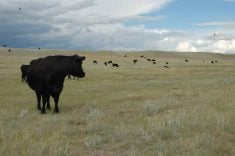KELOWNA, B.C. – British Columbia’s Okanagan apple industry is ending a dismal decade on a positive price.
The industry, which generates $130 million in wholesale revenue and contributes $900 million in economic activity, had a bad start to the millennium, especially the last two years. Apple growers, who make up 75 percent of the region’s tree fruit industry, were slammed with a high dollar, low prices, small fruit and a killer frost.
“A lot of acreage has been reduced and removed because of those challenges. If it doesn’t improve, there are risks,” said Penny Gambell, a third generation farmer near Kelowna.
Read Also

Volatile temperatures expected for this winter
DTN is forecasting a lot of temperature variability in the Canadian Prairies this winter. Precipitation should be close to average.
“But the quality of fruit is wonderful this year. Overall, I’m positive the returns will be better from the marketplace.”
B.C. Fruit Growers Association president Joe Sardinha shares the optimism.
“This year, other than a section in Summerland, there was little or no hail in the rest of valley,” he said.
“The size of the crop is up, and quality is good. If anything is a bit of a challenge, it’s that size is slightly smaller, but Washington state has size challenges as well. It will be interesting to see how that plays out in the marketplace. If you’re able to grow one size bigger, you could do very well.”
The Okanagan is expected to produce 3.5 million boxes of apples, almost a million more than last year, but Washington is projected to produce 108 million boxes.
A large Washington crop usually causes price problems north of the border, but that concern is diluted this year because the North American crop overall is five percent smaller than normal.
“That bodes well as long as consumption rates stay the same and economic factors don’t take a turn for the worse,” Sardinha said.
However, there is a worm in the apple.
Mexico, a large U.S. customer, slapped a 20 percent tariff on American apples, and Sardinha fears that fruit will end up in Canada, driving prices down.
So far that hasn’t happened and the initial price is higher than last year.
Sunrise apples, which are picked in August, are almost all sold at prices five percent higher than last year, and Gala is selling at six percent higher, said Adrian Abbott, director of marketing for B.C. Tree Fruits.
The sales agency is trying to create a stronger connection between Okanagan-grown fruit and western Canadian consumers.
“We’re going to reach out more strongly to consumers.”
These efforts appear to be paying off because the crop, no matter how big or small, always sells out, mostly to Canadians.
Last year’s crop sold out just as prices were rebounding from the average 12 cents a pound growers received for most of the apples.
However, the final 2009 crop payment in August drove up growers’ average payout, and their optimism.
“The industry average came up to 14 cents a lb., which was a hell a lot better than the 12 that we kept reminding the public about earlier in the season,” Sardinha said.
In the spring, he was worried growers wouldn’t be able to get the needed supplies to produce a good crop.
“As far as I know, we’ve haven’t had wholesale bankruptcies, but they are going to need some good market returns just to cover their debts.”














